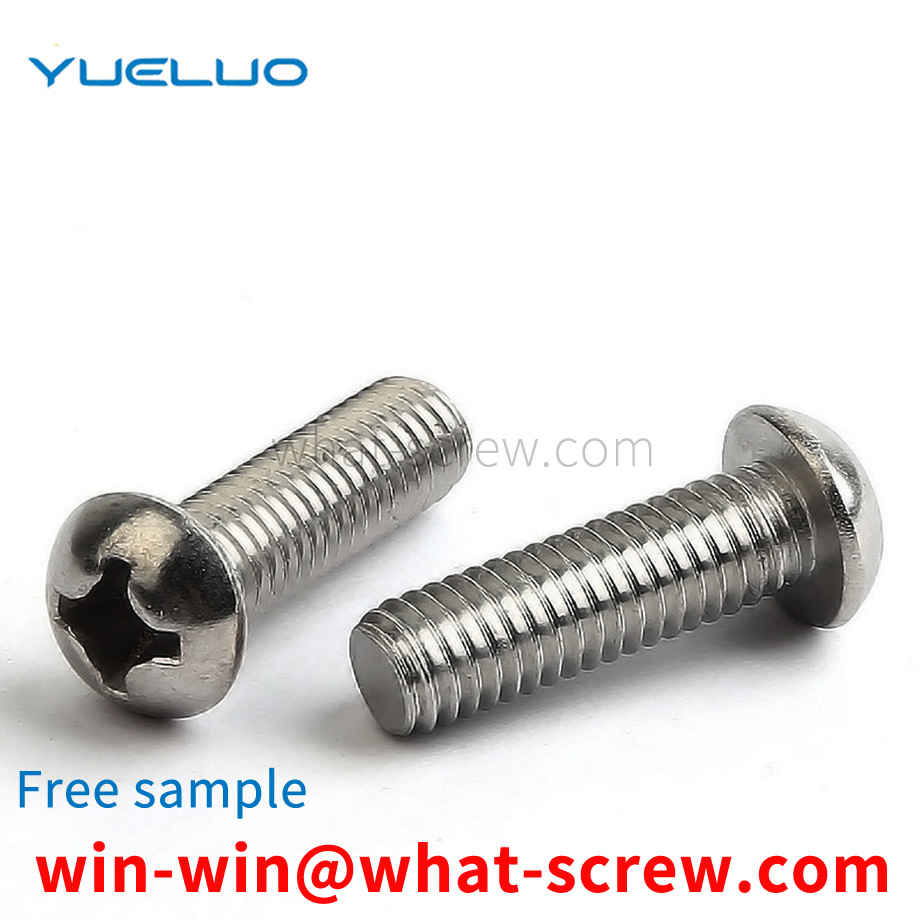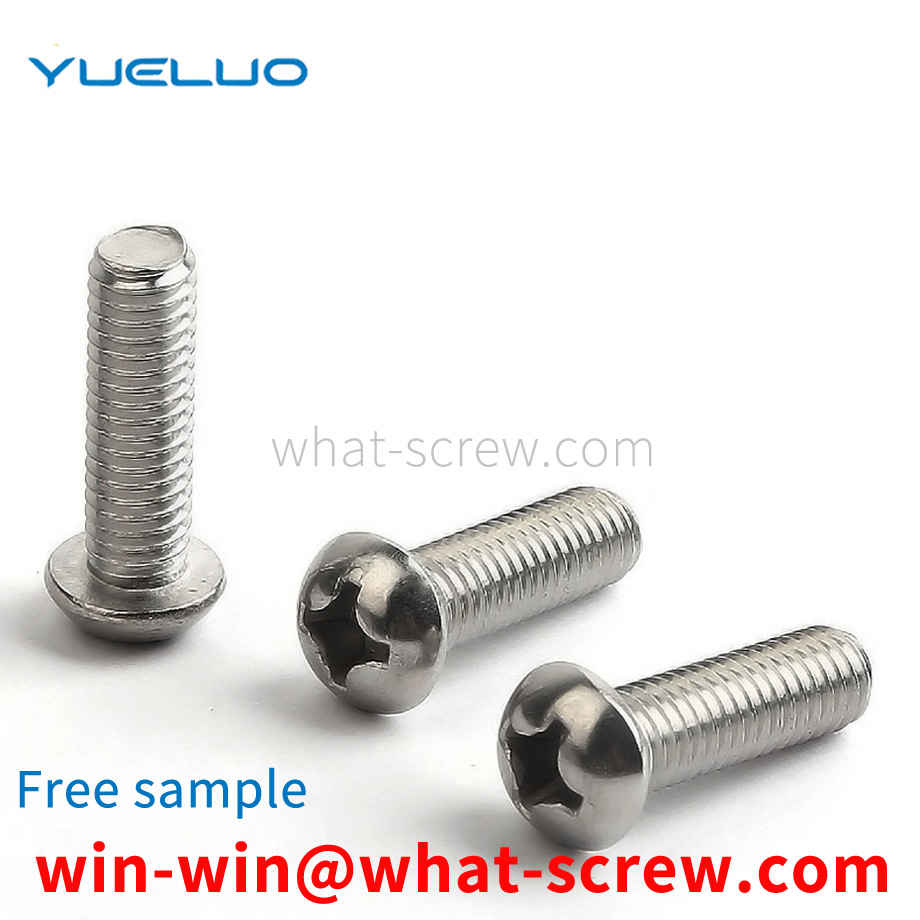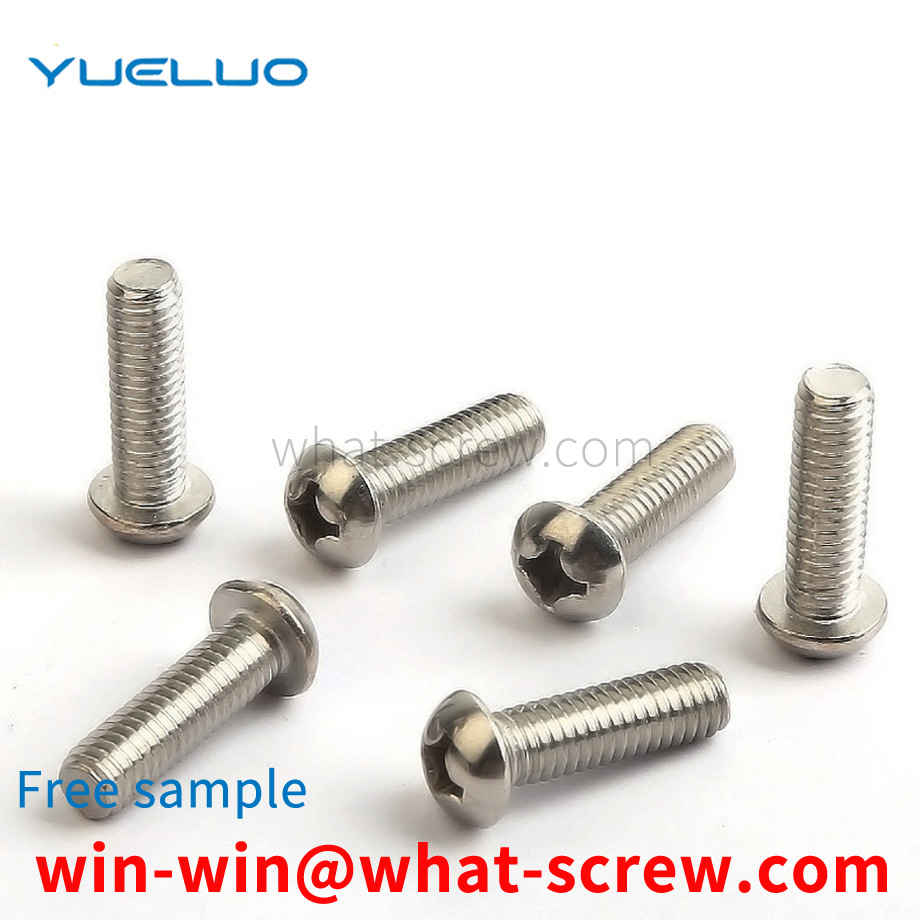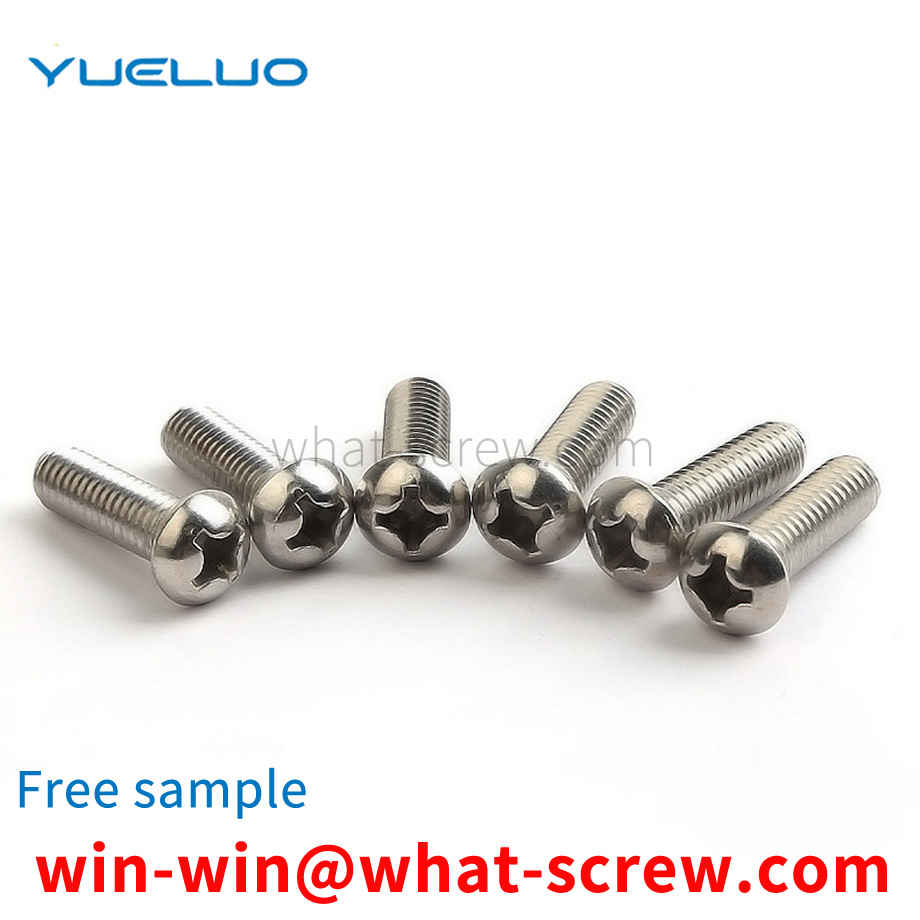What is the tolerance range of precision screws?
What is the tolerance range of precision screws?
Service Hotline
+86760-8787 8587We have more than ten years of production experience in the screw industry. The main products are: Torx head screws, ANSIB18.22.1, separate combination bolts, small hexagon head reamed hole bolts, high-definition 8.8-grade screws, high metric precision, screw screw connection nut ,Q191 screws, U-shaped pipe clamp screws, black galvanized pan head screws, GB823 round head screws, large hole flat washers, high-strength bolts, aluminum alloy nuts, spring washers with flat washers and other fasteners, due to the product material Different specifications and different prices, please contact us if necessary.


The difference between high-strength bolt friction type and pressure-bearing type connection: High-strength bolt high-strength bolt connection is to clamp the plate of the connecting plate through a large tightening pre-pressure in the bolt rod, which is enough to generate a large friction force, thereby improving the connection. The integrity and stiffness of the bolt can be divided into two types: high-strength bolt friction type connection and high-strength bolt pressure type connection according to different design and force requirements when subjected to shear force. The essential difference between the two is that the limit state is different, although It is the same kind of bolt, but it is very different in terms of calculation method, requirements, and scope of application. In the shear design, the friction type connection of high-strength bolts is the limit state when the external shear force reaches the possible maximum friction force provided by the bolt tightening force between the contact surfaces of the plates, that is, the internal and external shear force of the connection is guaranteed not to exceed maximum friction. The plate will not undergo relative slip deformation (the original gap between the screw and the hole wall is always maintained), and the connected plate will be elastically stressed as a whole. In the design of shear resistance, the external shear force is allowed to exceed the maximum friction force in the high-strength bolt-bearing connection. At this time, relative slip deformation occurs between the connected plates until the bolt rod contacts the hole wall, and then the connection depends on the bolt rod. The shearing of the body and the bearing of the hole wall and the friction between the contact surfaces of the plates jointly transmit the force, and finally the shearing of the shaft or the bearing of the hole wall is regarded as the limit state of the connection shearing. In a word, friction type high-strength bolts and pressure-bearing high-strength bolts are actually the same type of bolts, but whether the design considers slippage. Friction type high-strength bolts can never slide, and the bolts do not bear shear force. Once slipped, the design is considered to reach a state of failure, which is technically mature; pressure-bearing high-strength bolts can slide, and the bolts also bear shear force, and the final damage is equivalent to ordinary Bolt failure (bolt shearing or steel plate crushing).

A rivet is a nail-shaped object with a cap on one end: in riveting, the parts being riveted are joined by their own deformation or by interference. There are many types of rivets, and they are informal. However, the two ends of conventional rivets are concentric, which is not suitable for special occasions.


nut is a nut, a part that is screwed together with a bolt or screw for fastening. A component that must be used in all production and manufacturing machinery is divided into carbon steel, stainless steel, non-ferrous metals (such as copper), etc. several types. Chinese name nut Foreign name Crewnut alias Nut properties and bolts or screws screw together to tighten the role of carbon steel, stainless steel, non-ferrous metal standard GB German standard international standard Japanese standard American standard features Steel, stainless steel, copper, alloy, etc.

Type 1) Slotted ordinary screws are mostly used for the connection of smaller parts. It has pan head screws, cylinder head screws, countersunk head screws and countersunk head screws. The head strength of pan head screws and cylinder head screws is high, and they are connected to common parts; the head of semi-countersunk head screws is arc-shaped, and its top is slightly exposed after installation, and it is beautiful and smooth. It is generally used for instruments or Precision machinery; countersunk head screws are used where the nail head is not allowed to be exposed. 2) The head of the hexagon socket head cap screw and the hexagon socket head flower screw can be embedded in the component, which can apply a large torque and have a high connection strength, which can replace the hexagonal bolt. It is often used in joints where compact structure and smooth appearance are required. 3) Cross recessed ordinary screws have similar functions to slotted ordinary screws, and can be replaced by each other, but the cross recessed ordinary screws have higher groove strength, are not easy to be bald, and have a more beautiful appearance. When using it, it must be loaded and unloaded with the matching cross-shaped screwdriver. 4) Lifting ring screw Lifting ring screw is a kind of hardware accessories for load-bearing during installation and transportation. When in use, the screw must be screwed in to the position where the supporting surface is tightly fitted, and tools are not allowed to be tightened, nor is a load perpendicular to the plane of the lifting ring allowed to act on it. 5) Set screws Set screws are used to fix the relative position of the parts. Screw the set screw into the screw hole of the part to be fastened, and press its end against the surface of the other part, that is, to fix the former part on the latter part. Set screws are usually made of steel or stainless steel, and their end shapes are conical, concave, flat, cylindrical and stepped. The end of the tapered or concave end set screw directly presses the parts, and is generally used in places that are not often disassembled after installation; the end of the flat end set screw is smooth and does not damage the surface of the parts after tightening, and is used for frequent adjustment of the position. At the connection, only a small load can be transmitted; the cylindrical end fixing screw is used in the fixed position that needs to be adjusted frequently, it can withstand a large load, but the anti-loosening performance is poor, and anti-loosening measures should be taken when fixing; Set screws are suitable for fixing parts with thicker walls. 6) Self-tapping screws When self-tapping screws are used on the connected parts, threads may not be pre-made at the connected parts. Use the screw to tap the thread directly when connecting. It is often used to join thin metal plates. There are two types of taper end tapping screws and flat end tapping screws. 7) Self-tapping locking screw Self-tapping locking screw not only has self-tapping effect, but also has low screw-in torque and high locking performance. Its thread is a triangular section, and the surface of the screw is hardened and has high hardness. Its thread specifications are M2 ~ M12.

The above content is uploaded by Yueluo or the Internet. If there is any copyright issue, please contact [email protected].

What is the tolerance range of precision screws?

How to choose the right stainless steel screw manufacturer?

Why is there an R angle under the head of the hexagon head s...

We have more than ten years of production experience in the ...

We have more than ten years of production experience in the ...

We have more than ten years of experience in screw industry ...

We have more than ten years of experience in screw industry ...